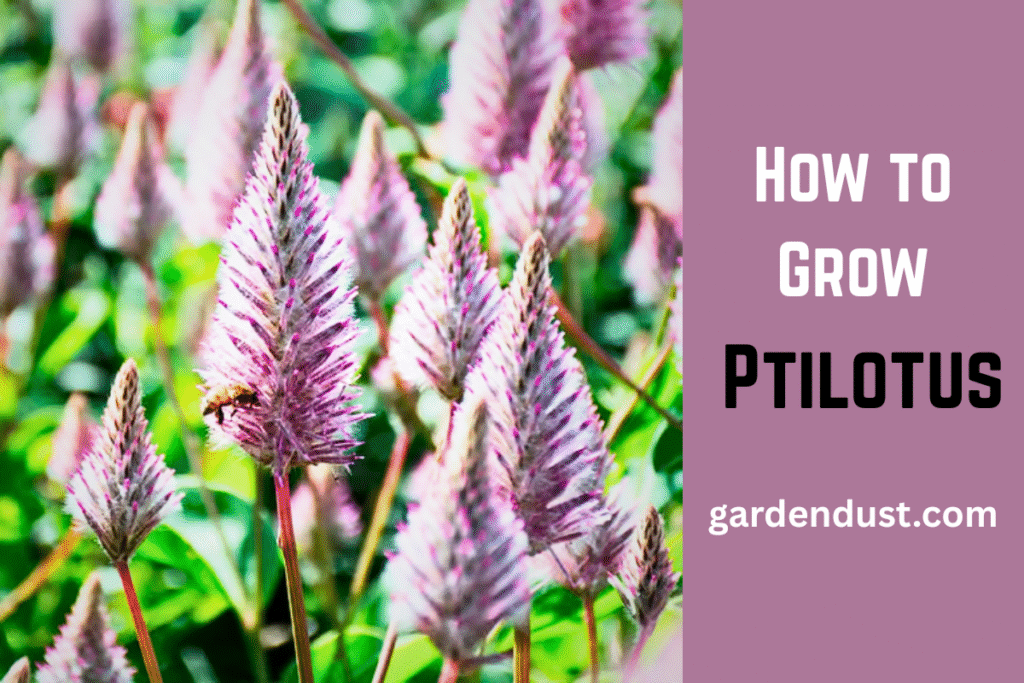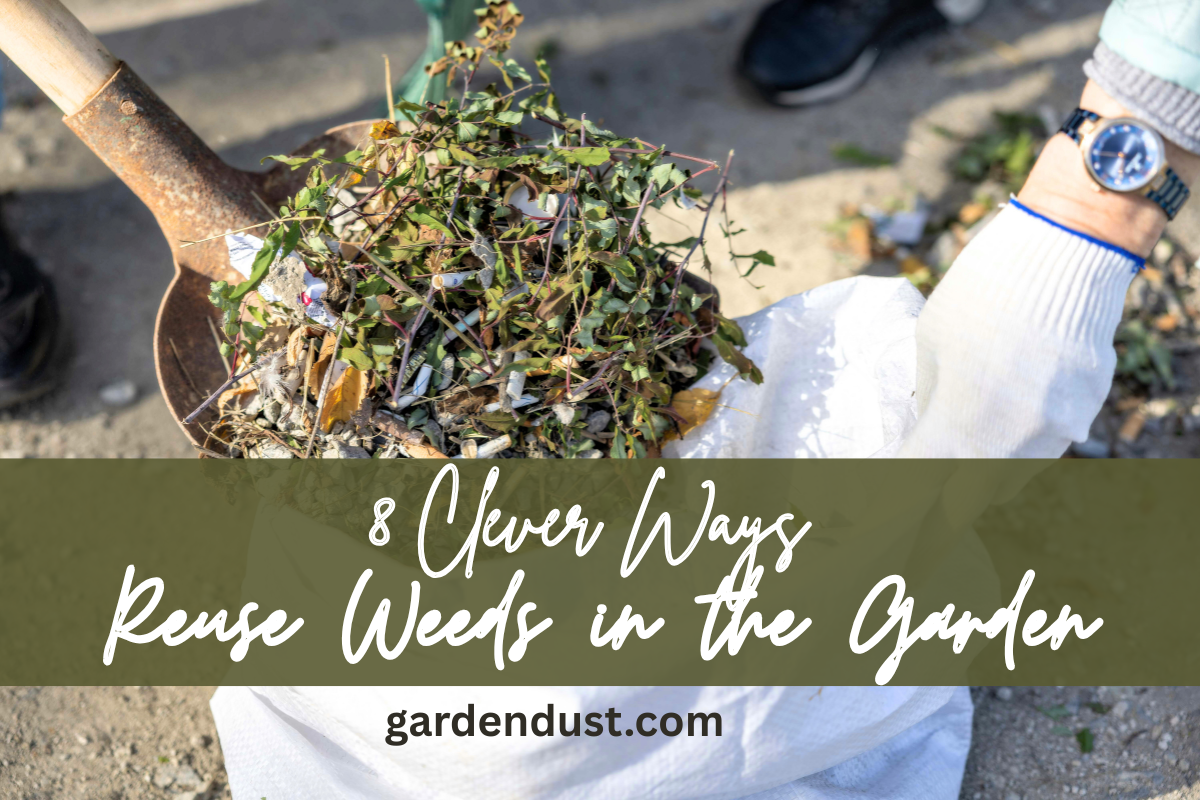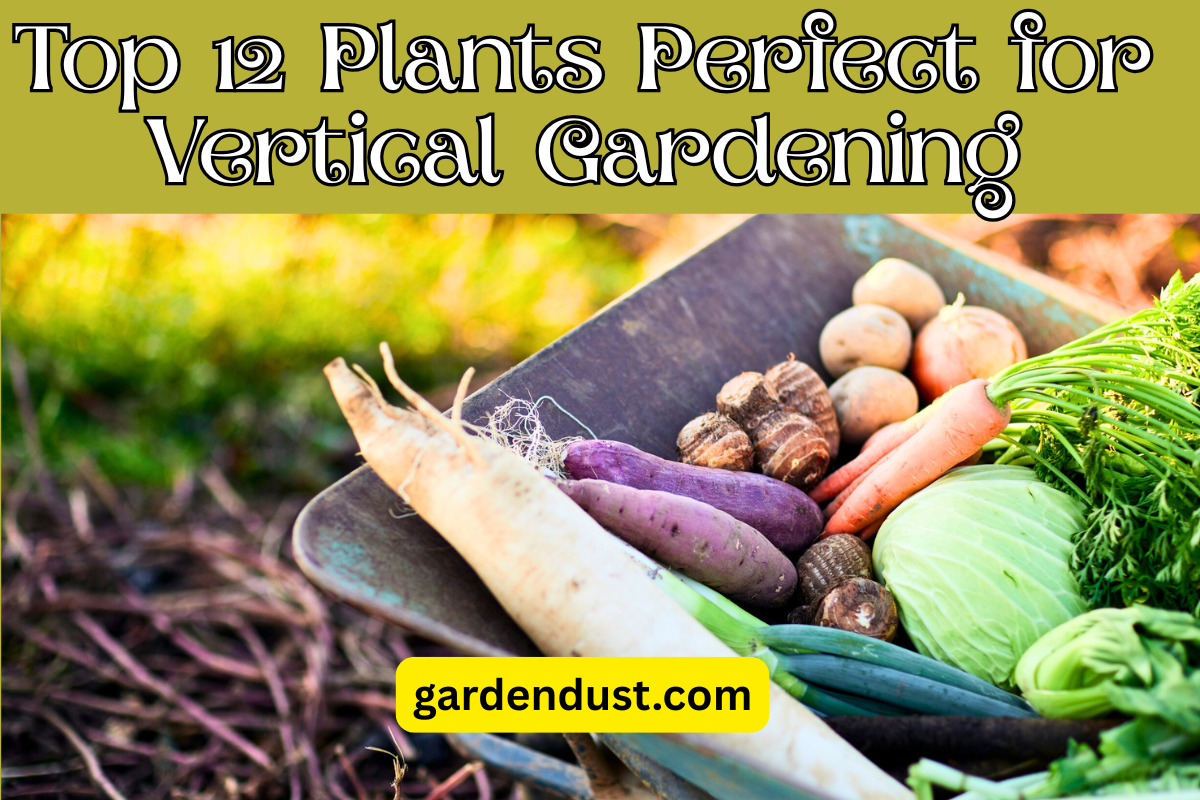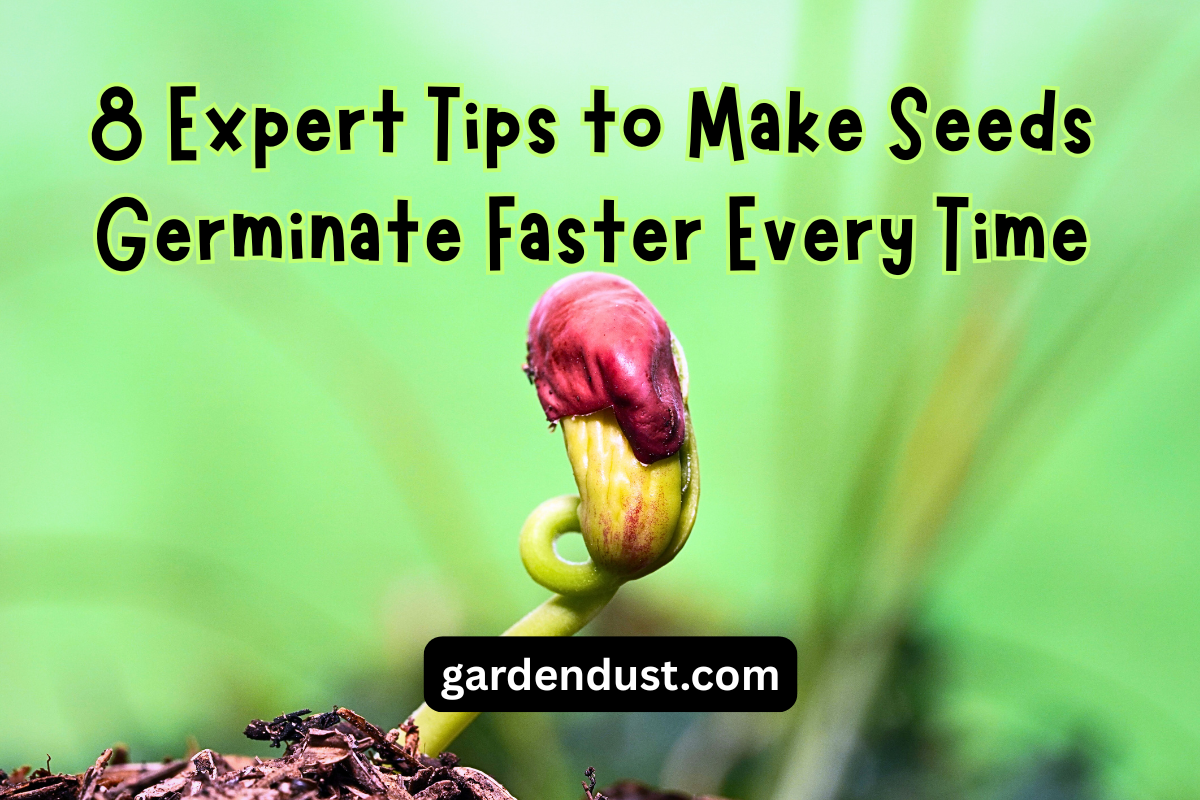What is Ptilotus?
Ptilotus, commonly known as “Mulla Mulla,” is a striking ornamental plant native to Australia. Known for its distinctive bottle-brush spikes in vibrant pink and silver hues, this drought-tolerant beauty has become increasingly popular in gardens worldwide.
These sun-loving plants thrive in hot, dry conditions, making them perfect for xeriscaping and low-maintenance gardens. While they’re perennial in warm zones (10-11), they’re typically grown as summer-blooming annuals in cooler regions. Their unique, feathery blooms add a touch of exotic charm to any landscape.
Quick Facts:
- Native to arid regions of Australia
- Grows 12-24 inches tall and 12-18 inches wide
- Blooms from mid-summer to mid-fall
- Extremely drought-tolerant once established
- Attracts pollinators like bees and butterflies
- Deer resistant
:max_bytes(150000):strip_icc()/SPR-growing-ptilotus-exaltatus-5083740-01-b1393b28afed44e59eb9680f7ab8fa20.jpg)
Ptilotus exaltatus with its distinctive pink bottle-brush flowers
Popular Ptilotus Varieties
Ptilotus ‘Joey’
A compact variety growing 12-18 inches tall with bright silver-pink fluffy blooms. Excellent for containers and borders.
Features: Drought-tolerant, heat-loving, good as cut flower
Ptilotus ‘Matilda’
Taller variety (18-24 inches) with champagne-salmon colored plumes. Excellent for cut flower production.
Features: Longer stems, larger flowers, elegant color
Other Varieties
- Ptilotus nobilis – Soft, flowing flowers
- Ptilotus manglesii – Rose-tipped flowers
- Ptilotus spathulatus – Used as groundcover
Note: P. exaltatus varieties are most common in cultivation
Variety Selection Tips:
Choose ‘Joey’ for compact spaces and containers, or ‘Matilda’ for cut flower production and taller displays. Both varieties are equally drought-tolerant and heat-loving, differing primarily in height and flower color intensity.
Ideal Growing Conditions
Light
Ptilotus requires full sun – at least 6-8 hours of direct sunlight daily for optimal growth and flowering. These are truly sun-loving plants native to the arid regions of Australia.
Insufficient light will result in weak, leggy growth and reduced flowering.
Soil
Ptilotus thrives in well-drained, sandy soil with low to moderate levels of nutrients. The ideal pH range is between 5.5 and 6.5. Amend heavy clay soils with plenty of organic matter to improve drainage.
Good drainage is critical – they cannot tolerate wet feet.
Water
Extremely drought-tolerant once established. Water newly planted Ptilotus regularly until well established, allowing the top inch of soil to dry between waterings. Mature plants rarely need supplemental water except in severe drought.
Overwatering is the most common cause of failure.
Temperature
Heat-loving plants that should not be exposed to cold weather. The ideal temperature for transplanting is around 75°F (24°C) with nighttime temperatures no lower than 60°F (15°C). Plant when soil has warmed to at least 55°F (13°C).
Hardy in zones 10-11; grow as an annual in cooler regions.
Climate Compatibility:
Ptilotus is ideal for Mediterranean, tropical, subtropical desert, or temperate climates. They’re perfect for xeriscaping in regions with hot, dry summers. In cooler climates, they can be grown as summer annuals or in containers that can be moved to protected areas during cold weather.
How to Grow Ptilotus from Seeds
Prepare Seeds
To improve germination, presoak seeds overnight in water before planting. Ptilotus seeds are small but don’t require special treatment beyond pre-soaking.
Start Seeds Indoors
For best results, start seeds indoors about 8-10 weeks before your last frost date. Use a well-draining seed-starting mix with a pH between 5.5 and 6.5. Sow one seed per cell in seed trays.
Provide Light for Germination
Cover seeds very lightly with vermiculite or a thin layer of soil. Ptilotus seeds require light to germinate, so don’t bury them deeply. Maintain a soil temperature of 76-80°F (24-27°C) for best germination.
Allow Time for Germination
Seeds typically germinate in 5-15 days but can take up to 45 days. Be patient and maintain moderate soil moisture – neither soggy nor completely dry.
Transplant Correctly
Transplant seedlings after all danger of frost has passed and soil has warmed. Space plants 8-12 inches apart. When planting, ensure the crown of the plant is level with the soil surface – Ptilotus is sensitive to deep planting.
Direct Sow Option
In warm climates, you can direct sow after all danger of frost has passed. Press seeds into the soil surface and barely cover. Keep soil consistently moist until germination occurs.
Important Seed Notes:
Ptilotus seeds are relatively expensive and can have variable germination rates. For the home gardener, starting with nursery plugs or young plants may be easier and more reliable than growing from seed.
Ongoing Care Guide
Watering
- Water thoroughly but infrequently
- Allow soil to dry between waterings
- Reduce watering in cooler weather
- Avoid overwatering – the primary cause of root rot
Fertilizing
- Use minimal fertilizer – Ptilotus prefers lean soil
- If using, apply half-strength balanced fertilizer
- Feed monthly during growing season
- Too much nitrogen causes leggy growth
Pruning
- Deadhead faded flowers to encourage reblooming
- Do not pinch central growth point of young plants
- For cut flowers, keep 4-5 most vigorous side shoots
- Trim any damaged or diseased foliage promptly
Support
- Taller varieties like ‘Matilda’ may need support
- Use two layers of netting for cut flower production
- Plants can become top-heavy when in full bloom
- Individual stakes work well for container plants
Winter Care
- Perennial only in zones 10-11
- Protect from frost in marginal areas
- Consider growing as an annual in colder regions
- Container plants can be moved indoors in winter
Harvesting
- Harvest when plumes are 1/2 to 3/4 open
- Expect flowers 12-20 weeks after planting
- Cut stems will last 1-2 weeks in water
- Use floral preservative to extend vase life
Ptilotus Growth Timeline
Weeks 1-2
Seeds germinate in 5-15 days under optimal conditions (76-80°F). Seedlings emerge with small cotyledons.
Weeks 3-4
Seedlings develop true leaves. Keep soil consistently moist but not wet. Provide bright light.
Weeks 5-8
Plants establish root systems. Transplant to garden when soil temperature reaches above 55°F and all danger of frost has passed.
Weeks 9-12
Plants grow actively, developing more foliage and beginning to form flower buds. Ensure plants receive adequate water while establishing.
Weeks 12-16
First flower plumes begin to appear. Plants reach approximately half their mature height.
Weeks 16-20
Peak flowering period begins. Plants reach full height (12-24 inches depending on variety) and produce multiple flower plumes.
Weeks 20+
Continued flowering through summer and into fall with proper care and deadheading. Plants may begin to decline with cooler fall temperatures.
Common Issues & Solutions
Root Rot
Symptoms: Wilting despite moist soil, yellowing leaves, black or brown roots, plant collapse
Causes: Overwatering, poor drainage, contaminated soil
Solutions:
- Ensure excellent drainage in all growing conditions
- Allow soil to dry between waterings
- Use fungicidal treatments if necessary
- When reusing pots, sterilize with bleach solution
Poor Flowering
Symptoms: Few or small flower plumes, stunted growth
Causes: Insufficient light, rootbound plants, excess nitrogen
Solutions:
- Ensure plants receive at least 6-8 hours of direct sun
- Transplant rootbound seedlings promptly
- Reduce nitrogen-heavy fertilizers
- Ensure plants are not planted too deeply
Leggy Growth
Symptoms: Tall, spindly growth with few branches and flowers
Causes: Insufficient light, overcrowding, excess fertilizer
Solutions:
- Provide full sun conditions
- Space plants properly (8-12 inches apart)
- Reduce fertilizer applications
- Provide support for taller plants
Seed Germination Problems
Symptoms: Low germination rates, weak seedlings, damping off
Causes: Old seeds, improper light, temperature fluctuations
Solutions:
- Use fresh seeds when possible
- Maintain consistent soil temperature (76-80°F)
- Provide light for germination – don’t bury seeds deeply
- Use sterile seed-starting mix
Prevention Tips:
Most Ptilotus issues stem from improper growing conditions. Remember that these are desert-adapted plants that prefer full sun, lean soil, and minimal watering once established. Mimicking their native growing conditions is the key to success.
Landscaping & Garden Uses
Container Gardens
Perfect for pots, window boxes, and patio containers. Combine with other drought-tolerant plants like succulents, lavender, or ornamental grasses.
Border Plants
Use in the middle or back of borders for height and texture. Their upright form provides vertical interest among mounding perennials.
Xeriscaping
Ideal for water-wise landscapes and rock gardens. Combine with other drought-tolerant natives for a sustainable, low-maintenance garden.
Cut Flowers
Excellent for fresh arrangements, with stems lasting 1-2 weeks in water. ‘Matilda’ variety is especially good for cutting due to longer stems.
Dried Arrangements
Flower plumes dry beautifully for everlasting arrangements. Harvest when flowers are fully open and hang upside down in a dry, dark place.
Wildlife Gardens
Attracts pollinators like bees and butterflies. Deer-resistant qualities make it suitable for gardens in areas with high deer pressure.
Companion Planting Suggestions
Ptilotus pairs beautifully with other plants that share similar growing requirements:
Low-Growing Companions
- Sedum
- Scaevola
- Portulaca
- Blue Fescue
Similar Height Companions
- Angelonia
- Salvia
- Lantana
- Gaillardia
Taller Backdrop Plants
- Ornamental Grasses
- Celosia
- Russian Sage
- Gaura
Summary: Growing Ptilotus Successfully
Key Requirements
- Full sun (6-8 hours direct sunlight)
- Well-drained, sandy soil
- Warm temperatures (above 55°F)
- Minimal watering once established
- Protection from frost and excessive moisture
Best Practices
- Plant after all danger of frost has passed
- Space plants 8-12 inches apart
- Do not plant too deeply
- Allow soil to dry between waterings
- Deadhead to encourage continued blooming
Common Mistakes to Avoid
- Overwatering (leading to root rot)
- Planting in shade or partial sun
- Heavy, poorly drained soil
- Planting too early in cool soils
- Over-fertilizing
When to Expect Results
- Germination: 5-15 days (can take up to 45 days)
- First flowers: 12-16 weeks after planting
- Peak flowering: Mid-summer through early fall
- Mature height: 12-24 inches (variety dependent)
Final Growing Tips
Ptilotus is a unique and rewarding plant to grow, bringing exotic Australian beauty to gardens worldwide. Remember that these plants evolved in harsh conditions and will thrive with minimal intervention once established. The key is mimicking their natural habitat – plenty of sun, minimal water, and excellent drainage.
Whether used in mixed containers, border plantings, or cut flower gardens, the distinctive bottle-brush plumes of Ptilotus provide texture, color, and interest that few other plants can match. Happy Gardening….







